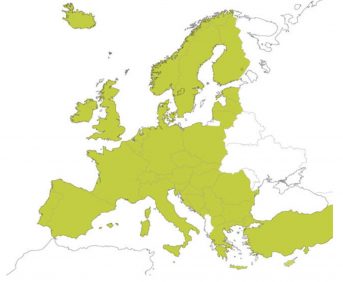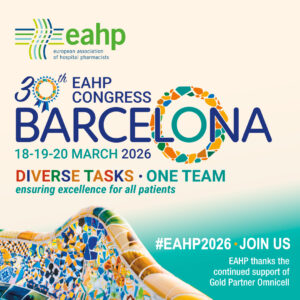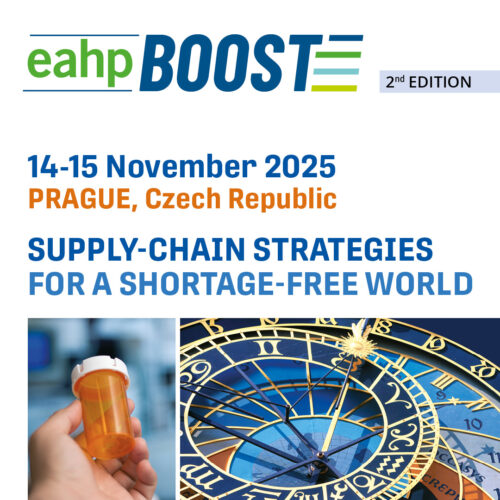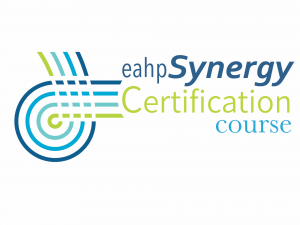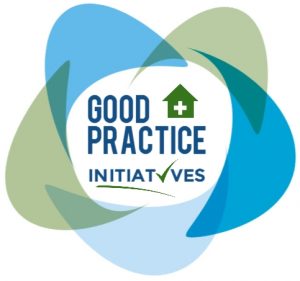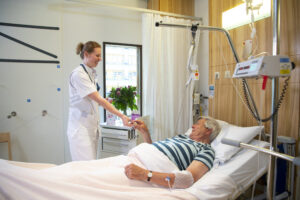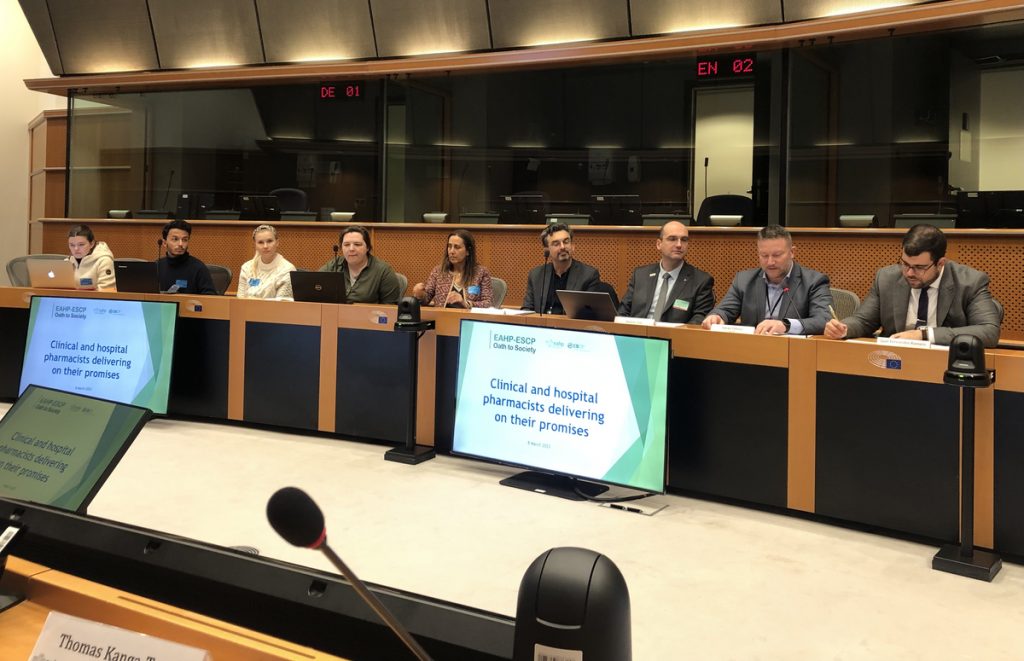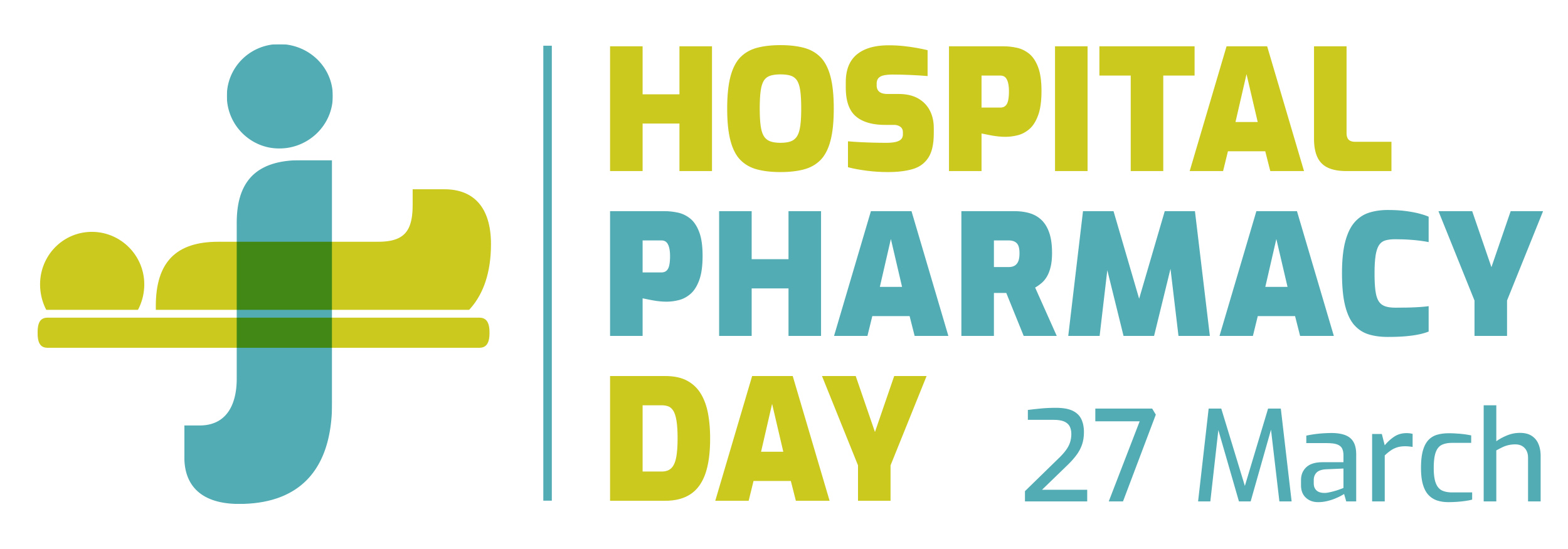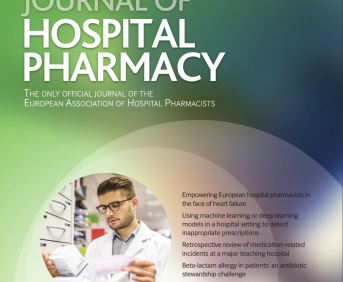IDEA BOX: INVOLVING HOSPITAL PHARMACY ASSISTANTS IN A QUALITY APPROACH
Pdf

European Statement
Patient Safety and Quality Assurance
Author(s)
Adeline HERLIN, Hermine ZIGA, Pauline PAYOT
Why was it done?
The aim is to continuously improve quality and efficiency.
What was done?
In the interests of continuous quality improvement, we have set up a suggestion box in the pharmacy’s unit repackaging sector.
How was it done?
We have set up a suggestion box for technician and pharmacists.
Each person can submit ideas or questions, anonymously or not.
After one month, the box was unpacked. The ideas and queries were analysed and discussed.
What has been achieved?
Eight points were raised.
One point concerns procedures.
The existing procedures on the intranet network are not well known to users. We have provided an easy-to-access binder.
Three points relate to packaging methods (list of products according to packaging method, removal of expired packaged products, mismatch of the Eticonform® label with the blister pack).
A decision tree was made (Euraf®: large quantities, multi-dose vials, magistral formula, small blister packs). The printing of the ledgers indicates the packaged products and their expiry dates. The removal of expired products is done according to the ledgers. A precaution must be taken when editing labels Eticonform® “laboratory” labels. Indeed, the size of the blister packs differs from one laboratory to another.
The fifth point concerns the organization.
Technicians wish a storage area dedicated to repackaged specialties to compensate for stock errors.
After discussion, we did not retain this proposal.
The other point concerns the lack of equipment.
A stool and a ruler were provided.
The penultimate point concerns the use of returns from services in multi-dose vials.
We propose the packaging of small units with expiry dates < 3 months with the Euraf® bagging machine.
Otherwise (e.g. Carbimazole), we propose the packaging of sufficient quantities for 7 days in the vials with pre-printed labels with an expiry date of one week.
The last point concerns the labelling of blisters with desiccant capsule (e.g. Nicorandil).
We offer Eticonform® re-labelling with a statement: USE BY xx/xx/202x (30 days after re-labelling).
What next?
The involvement of the technician team in a proactive approach to risk management is essential. We wanted to harness their practical expertise and energize the team.
The box will be integrated into our current practice.
EXCEPTIONAL HEALTH SITUATIONS: OBSERVATION OF AN IMMERSIVE EXERCISE IN THE HOSPITAL PHARMACY AND FEEDBACK
Pdf

European Statement
Patient Safety and Quality Assurance
Author(s)
Delphine BODEN, Laura RODRIGO, Rachel MAHE, Olivier SELLAL, Maxime PARE, François RONDEAU
Why was it done?
The main objective was to test the activation of our Pharmacy-Sterilization-Operational-Unit (PS-OU), established in December 2022, and to work on its interaction with the others OU of the different hospital services. The second aim was to continue the training of pharmaceutical teams on exceptional health situations (EHS).
What was done?
In March 2024, our hospital pharmacy (HP) took part in an inter-departmental exercise based on the scenario of managing a massive influx of polytrauma victims at our hospital. The quick engagement of mobile medical units and sterilization department, dependent on the HP, is indeed a key element in the optimal care of victims, whether in hospital or pre-hospital.
How was it done?
Two interns and one pharmacy technician, with an analysis framework, were in attendance as observers through the exercise. During the PS-OU activation, various points were observed: global crisis management, task assignment and communication between the members, data centralization and communication with the others OU, efficiency and speed of response to problems… A feedback questionnaire was then sent to the 9 main players (PS-OU members, on-call pharmacist…). Intra-HP and inter-departmental feedback were provided immediately, then a posteriori.
What has been achieved?
For 3 hours, our HP had activated its OU to provide the best possible response to this exercise. The observation of this exercise pointed out the rapid activation and efficiency of the PS-OU (by the on-call pharmacist, on the order of the head of department), so a great intern and extern communication. Areas for improvement were raised, such as the optimization of available tools. 89% of players answered the feedback questionnaire. The communication was considered operational and the PS-OU essential by all the respondents. They also feel that this type of exercise is needed (75%) and helps prepare them for EHS (88%).
What next?
Aims of this exercise were achieved. Preparing, hosting and then analyzing this kind of exercise, although seemingly time-consuming, enables us to validate and, where required, consolidate the intended organization for EHS. These results also strengthen our determination to pursue our annual exercise program. Shortly, an exercise with the supply members of our PS-OU will be organized, in order to train the less experienced members as well.
EVALUATION AND DECISION-MAKING RELATED TO QUALITY AND WORKLOAD ASSESSMENT OF PARENTERAL NUTRITION COMPOUNDING
Pdf

European Statement
Patient Safety and Quality Assurance
Author(s)
Jorge Esquivel Negrín, Amara Magdalena Pérez, Josephine Peña Hernández, Jenifer González Chávez, Carmen Lidia Díaz Díaz, Silvia González Suárez, Alba Domínguez Hernández, Jaime Muñoz Manrique, Esther González Carrillo, Pilar Díaz Ruiz
Why was it done?
PN is a high-risk preparation that carries a significant risk of iatrogenesis, making it essential for staff responsible for its prescription, validation, and preparation to be well-trained, and for a reliable quality assurance plan to be in place. Monthly quality indicators include errors by pharmacists during transcription to nutrition software, errors by technicians in tray preparation, and nursing errors during PN preparation. Acceptable monthly error thresholds were set at 2 for transcription, 25 for tray preparation, and 6 for sterile PN preparation. Additional activity indicators, such as the number of PN preparations per month, episode duration, and reasons for suspension, were also analyzed.
What was done?
A training program centered on audiovisual resources related to parenteral nutrition (PN) procedures was implemented in a tertiary hospital after a quality assessment within the PN department revealed a decline in certain indicators between 2020 and 2022. A shared folder with video tutorials covering various processes was made available to pharmacy staff, mainly intended for nursing staff and pharmacy technicians, who typically have high turnover rates between departments.
How was it done?
The indicators showed a steady increase in PN preparations, rising from 411±74 per month in 2020 to 475±51 in 2023, with a record of 634 preparations in March 2024. Notably, 18.1% of episodes in 2023 lasted over two weeks, partly due to the underutilization of home PN and a lack of hospital beds despite increased outpatient activity. Errors in tray preparation increased from 2020 to 2022, peaking in 2021. This coincided with high staff turnover and an increased workload. In response, the implementation of video tutorial training for rotating staff was introduced in 2022.
What has been achieved?
This initiative reduced tray preparation errors, which decreased to an average of 12±4.9 between January 2023 and March 2024.
What next?
These measures could be adapted and implemented in other departments within the pharmacy service. Regarding PN, we are now aiming to optimize the workload by promoting home PN, and implementing semi-automated systems such as barcodes and gravimetric control, which are also recommended to improve safety and traceability.
IMPROVING AUTOIMMUNE FEVER DISEASE PATIENTS’ AMBULATORY TREATMENT- WHEN MEDICAL QUALITY MEETS EFFICIENCY
Pdf

European Statement
Patient Safety and Quality Assurance
Author(s)
R. Malberger
A. Shinawi
M. Hamed said
C. Hamza
Why was it done?
We developed a unique ambulatory medical and pharmaceutical service providing treatment for children with autoimmune diseases at Carmel hospital.
What was done?
The ambulatory children’s clinic in Carmel hospital provides several medical services for children including those with autoimmune fever diseases, treated with canakinumab (ILARIS), a monoclonal antibody drug .
The ILARIS is given individually at the clinic during morning hours simultaneously with other treatments. The dosage is calculated individually, the remaining drug goes to waste. The treatment is not supplied by a permanent medical team.
Our initiative aims to establish a specific multidisciplinary service for ILARIS patients which will increase the quality, safety and economic efficiency of the treatment.
How was it done?
1. The current medical service was analyzed including all needs and goals, infrastructures and obstacles.
2. The pharmacy presented a multidisciplinary plane addressing all goals and difficulties suggesting a specific time scheduled for ILARIS treatments exclusively, involving a personal rheumatologist, a trained nursing team and a pharmacist dispensing process.
3. Assessment tools including financial formulas and patients’ questionnaire were established before implementation began.
What has been achieved?
1. The patient receives the services of a personal rheumatologist and a familiar trained nursing staff.
2. From the pharmacy perspective the intervention led to a decrease in prescription, preparation and administration errors as well as an impressive economical decrease in the cost of drug waste, saving more than 400,000$ over 13 months.
3. Questionnaires collected show increase in patients and family satisfaction.
4. Patients do not loose school or work days.
5. Community bonds between families of ILARIS patients were formed.
What next?
creating a unique treatment plan for ILARIS patients, collaboration of nursing, pharmacy and medical teams led to a significant improvement in the quality of care, economic efficiency and an increase in the satisfaction of patients. Our initiative achieved its aim in a short time and can be
applied to a verity of medical services in diverse settings in any clinic or hospital worldwide.
IMPROVING MEDICATION SAFETY IN PATIENTS WITH HEPATIC CIRRHOSIS
Pdf

European Statement
Patient Safety and Quality Assurance
Author(s)
ANDREA RODRÍGUEZ ESQUÍROZ, AMAYA ECHEVERRÍA GORRITI, Mª CONCEPCIÓN CELAYA LECEA, MARTA MARÍN MARÍN, LOREA SANZ ÁLVAREZ, PATRICIA GARCÍA GONZÁLEZ, JAVIER GORRICHO MENDIVIL, JAVIER GARJÓN PARRA.
Why was it done?
A prescription alert system was developed in our region for the management of drugs in patients with hepatic cirrhosis.
What was done?
A preliminary study made in our region showed that around one in four prescribed medications in cirrhotic patients are contraindicated or overdosed. Besides, it is estimated that around 38% of cirrhotic patients suffer any adverse effect despite approximately 70% of them are preventable.
In addition, safety problems can emerge due to the lack of data regarding drugs management in patients with cirrhosis.
For these reasons, it was essential to develop a tool that helped clinicians during the prescription process and pharmacists while pharmaceutical validation and medication review.
How was it done?
A computer-generated prescription alert system was developed. This system provides security data and dosing recommendations according to Child-Pugh classification of each patient. Besides, the tool suggests safer alternatives when an unsafe drug is prescribed. These recommendations were extracted from the product information and three databases: UpToDate, RxCirrhosis and Geneesmiddelen bij.
According to last laboratory data available from the electronic medical records such as bilirubin, prothrombin time and albumin, this tool estimates the Child-Pugh score, that must be completed with ascites and encephalopathy grade.
At this time, this tool is only available for clinical pharmacists for validation, and it is expected to be implemented for physicians soon.
What has been achieved?
From May to September 2024, a total of 202 drugs were included, 59 (29.2%) were considered contraindicated in some degree of cirrhosis, so it was recommended not to use. Dose adjustment was proposed in 109 (54.0%) drugs, while in 13.9% the tool recommended a safer alternative drug.
In order to complement this issue, information and training sessions were given about safe management of drugs in cirrhotic patients.
What next?
We are working in order to include safety data about more drugs in this alert system.
We hope this tool can help professionals of other regions and countries.
FROM HIGH-RISK TO HIGH-SAFETY: A TRANSITION FROM POTASSIUM AMPOULES TO PRE-DILUTED INFUSIONS
Pdf

European Statement
Patient Safety and Quality Assurance
Author(s)
Douwe H. van der Meer
Why was it done?
Potassium ampoules are concentrated electrolytes categorized as high-risk medications due to the potential for immediate cardiac arrest following accidental injection. Consequently, safety guidelines, such as those established by Qmentum and the Joint Commission International, advocate for the utilization of pre-diluted infusion bags containing potassium and recommend the removal of concentrated ampoules from clinical wards.
What was done?
In our large teaching hospital, we conducted a comprehensive assessment of all clinical indications for potassium ampoule usage. Based on this analysis, we developed a plan to replace ampoules with the right pre-diluted infusion bags. The majority of ampoule applications were identified as follows: treatment of hypokalemia, hyperhydration during cisplatin and high-dose methotrexate therapy, fluid replacement in pancreatitis, and prevention of hypokalemia in diabetic ketoacidosis. To address these indications, we implemented three types of pre-diluted potassium infusion bags: 20 mmol in 1 L normal saline, 40 mmol in 1L normal saline, and 40 mmol in 500 mL of isotonic saline (0.47% sodium chloride).
How was it done?
We established standardized infusion protocols for all indications of potassium supplementation and successfully removed potassium ampoules from all adult wards, including the Intensive Care Unit (ICU) and emergency care settings. Potassium ampoules are now available solely upon request from the pharmacy. Following the introduction of pre-diluted infusion bags, the utilization of ampoules decreased by 95%. Prior to implementation, the hospital utilized 4,000 potassium ampoules per quarter; this number has now reduced to 200 ampoules, with a continuing downward trend.
What has been achieved?
Following the introduction of pre-diluted infusion bags, the utilization of ampoules decreased by 95%. Prior to implementation, the hospital utilized 4,000 potassium ampoules per quarter; this number has now reduced to 200 ampoules, with a continuing downward trend.
What next?
In our neonatal intensive care units and pediatric clinical wards, certain applications of potassium ampoules remain that are not compatible with the use of pre-diluted infusion bags. We are currently investigating potential interventions to facilitate the removal of ampoules in these settings as well.
TRACE AROUND THE BLOCK! VALIDATION OF AUTOMATED INTEGRATION OF IMPLANTABLE MEDICAL DEVICE TRACEABILITY DATA INTO AN ELECTRONIC PATIENT RECORD
Pdf

European Statement
Patient Safety and Quality Assurance
Author(s)
L. Scherer(1), L. Lassara(1), A. Choquer(1), D. Delaitre(2), E. Maguer(2), L. Papin(3), O. Chauvel(1), G. Nicolaos(1), C. Dupont(1)
(1) Hospital Pharmacy, Hôpital Fondation A. de Rothschild, Paris, France
(2) Information Systems and Medical Technologies Department, Hôpital Fondation A. de Rothschild, Paris, France
(3) Operative unit, Hôpital Fondation A. de Rothschild, Paris, France
leontine-scherer@hotmail.fr
Why was it done?
French regulations require traceability of Implantable Medical Devices (IMDs) to be recorded on discharge documents and in the Electronic Patient Record (EPR). An audit carried out in 2023 showed that only 69.5% of patients’ EPRs mentioned the type of IMD used. We aimed to validate the data transfer automation from the Pharmaceutical Management Software (PMS) to the EPR via an interface.
What was done?
We developed an HL7 interface between our PMS and our EPR. It automatically uploads to the EPR, a file specifying the traceability data of IMDs entered in the PMS.
How was it done?
A “single day” audit was carried out by a single observer on three independent days (August and September 2024). Surgical program data were extracted via the medical management software (Web100T®, Dedalus): name, administrative file number (AFN), date and type of surgery, surgical specialty. Traceability data provided by the pharmacy were extracted from the PMS (PHARMA®, Computer Engineering): name, AFN, number of IMDs tracked. The presence of a traceability document in the EPR (DxCare®, Dedalus) was objectivized and the traceability delay was collected.
What has been achieved?
Over this period, 259 patients underwent surgery: (ophthalmology (74.5%, n=193), otolaryngology (9.3%, n=24), neurosurgery (9.3%, n=24), neuroradiology (5.4%, n=14), cardiology (1.5%, n=4)). At least one IMD was traced for 56.4% (n=146) of patients, with an average of 1.2±0.6 implants per patient ([1;5]; median=1). In all, traceability was achieved in the PMS for 146 patients (170 implants traced), including 139 patients within 48 hours after implantation (95.2% of patients, 150 implants). For these 146 patients, a traceability document was found in the EPR in 99.3% of cases (n=145). It was associated with the correct AFN for 143 patients. The presence of several traceability documents (2) was found for 2 patients, indicating that traceability had been carried out on 2 occasions (dispensing on different departments: common supply and specialized depot).
What next?
Opening up the interface between the PMS and the EPR automated the traceability data transfer (99.3%). The result is a complete EPR with exhaustive health traceability. These results encourage us to implement the final stage in the data transfer automation between the EPR and the shared digital medical record.
IMPLEMENTATION OF A PHARMACEUTICAL CARE CIRCUIT FOR LONG-ACTING ANTIRETROVIRAL TREATMENTS IN HIV PATIENTS IN A REGIONAL HOSPITAL
Pdf

European Statement
Patient Safety and Quality Assurance
Author(s)
AGUILAR GUISADO, CAROLINA. PHARMACY SERVICE. EL ESCORIAL UNIVERSITY HOSPITAL
SANCHEZ SUAREZ , SUSANA.PHARMACY SERVICE. EL ESCORIAL UNIVERSITY HOSPITAL
GARCIA GIMENO, M MERCEDES.PHARMACY SERVICE. EL ESCORIAL UNIVERSITY HOSPITAL
OTERINO MOREIRA, IVAN.PHARMACY SERVICE. EL ESCORIAL UNIVERSITY HOSPITAL
FIORANTE EMILSE SILVANA. INTERNAL MEDICINE SERVICE.EL ESCORIAL UNIVERSITY HOSPITAL
BARCIA MARTIN M ISABEL.PHARMACY SERVICE. EL ESCORIAL UNIVERSITY HOSPITAL
SAAVEDRA QUIROS VIRGINIA.PHARMACY SERVICE. EL ESCORIAL UNIVERSITY HOSPITAL
Why was it done?
Current antiretroviral therapies are effective, but adherence can be difficult for some patients, so innovation in parenterally administered antiretroviral treatments can help with adherence, as well as reducing the burden on patients with chronic HIV infection.
What was done?
Aim and Objectives: to implement a pharmaceutical care circuit for dispensing long-acting antiretroviral treatments in adult HIV patients.
How was it done?
Expected Improvements: Optimize antiviral use, enhance patient satisfaction, address adherence and maintain clinical effectiveness.
Circuit Design and Stages: In 2023, Pharmacy and Therapeutics Committee introduced intramuscular antiviral treatment with cabotegravir and rilpivirine, and established use criteria, in collaboration with the Internal Medicine service and Nursing consultation involved in the administration(NP):
1. Adults with undetectable Viral Load (VL) for at least 12 months
2. Treatment duration of 6-12 months
3. No prior resistance to non-nucleoside reverse transcriptase inhibitors or integrase inhibitors
4. Absence of HBV co-infection
5. Not pregnant or planning to conceive
6. Good treatment adherence
Pre-Treatment Circuit:
1. Medical Consultation: Clinical assessment and criteria evaluation.
2. Treatment Request: Physicians submit requests electronically.
3. Pharmacy Evaluation: Assessment of adherence to criteria with communication to the physician. Approved requests result in electronic prescriptions, ensuring correct dispensing.
In-Person Pharmaceutical Care Consultations (FCC):
• The first two visits confirm patient commitment and deliver dosing schedules.
• Medications are dispensed by pharmacy technicians and administered at Nursing practice
• From the third dose, consultations are conducted remotely to monitor adherence and effectiveness.
Nursing practice tasks:
• Confirm patient attendance the day before administration.
• Request medication from the pharmacy for the patient.
• Administer treatment and schedule future appointments based on the established calendar.
Implementation: The program began in November 2023.
What has been achieved?
8 patients were included, achieving 100% compliance from all services involved. Patient satisfaction is high, with undetectable VL maintained for 6-12 months post-treatment change. Mild flu-like symptoms were reported by 2 patients, and 2voluntarily discontinued due to mood concerns. 3 patients are awaiting treatment changes. All patients included underwent face-to-face FCC for the first and second doses, and telematic consultation for successive doses.
Limitations: small sample size.
What next?
This pharmaceutical care circuit can be adapted to various pharmacy services, providing a promising approach for HIV treatment adherence.The sample size needs to be enlarged for further studies.
INJECTABLE POTASSIUM CHLORIDE: AUDIT OF PRESCRIPTION AND ADMINISTRATION PRACTICES
European Statement
Patient Safety and Quality Assurance
Author(s)
Yosr Trabelsi, Leila Achour, Ikram Fezaa, Samer Sahbi, Chema Drira
Why was it done?
Never events are serious incidents generally linked to human and/or practical errors, which should never happen. Most of these events are avoidable, and are the subject of specific recommendations for the implementation of appropriate protective measures. According to ANSM (French drug safety agency), potassium chloride (KCl) is among the drugs frequently implicated in Never Events.
What was done?
The aim of this study was to assess the prescription and administration practices of injectable KCL in our hospital.
How was it done?
We carried out a 1-month prospective audit between 1 and 30 September 2024. All the prescriptions of injectable KCL were collected and evaluated by a pharmacist using a data collection form. It was divided into 2 sections: preparation and administration. The reference guideline used for this study was the 2022 ANSM recommendations. The results were analyzed using excel.
What has been achieved?
Fifty-five prescriptions were included. The compliance percentage for prescriptions and administration practices was 31.4% and 30.5 %, respectively. Calculation of total intake was compliant and the total volume of diluent was mentioned in all the prescriptions. In 62% of the prescription, the correct specific units were used and in 38.2 % of cases the correct slow infusion rate was prescribed. Nevertheless, the use of the route was inappropriate since only the IV route was prescribed due to the shortage of oral KCl. For administration, final concentration (≤4g/L) of the KCL infusion was respected in 90.9% of cases and all the preparations were labeled.
What next?
The study revealed several non-conformities, leading to the development of an improvement report. Therefore, we decided to implement a training plan about injectable KCl use to ensure patient safety.
MITIGATING MEDICATION MISHAPS: GOOD CLINICAL PRACTICES FOR LOOK-ALIKE, SOUND-ALIKE DRUG MANAGEMENT
Pdf

European Statement
Patient Safety and Quality Assurance
Author(s)
Öznur Gülertürk Er (1), Aslı Kamburoglu (2), Cumhur Yetmez (3), Ülker Şener (4), Aslı Özyıldırım (5)
Why was it done?
Look-Alike/Sound-Alike (LASA) medications are those that share similar appearances or phonetic characteristics when written or spoken. Such similarities can lead to confusion among healthcare professionals and may result in medication errors that can adversely affect patients (1).
What was done?
The primary objective of this study is to systematically evaluate medication names that exhibit similarities in appearance and sound, specifically focusing on the medications listed in the hospital’s formulary. Our goal is to minimize medication errors by accurately identifying real or potential risks associated with Look-Alike/Sound-Alike (LASA) drugs.
How was it done?
An algorithm utilizing Bigram Similarity (BI-SIM) was employed to calculate the orthographic and/or phonetic similarities of drug names listed in the hospital’s formulary. A total of 9,253 drug names were evaluated, excluding enteral nutrition products, cosmetics, and food supplements. The remaining 5,214 drug names were scored based on the BI-SIM algorithm. Drug pairs exhibiting a similarity ratio of 0.5 or higher were included in the study, resulting in 345 pairs. The clinical risks associated with these drug pairs—considering factors such as route of administration, potency, and pharmaceutical dosage form similarities—were scored and aggregated according to their BI-SIM similarity scores. Ultimately, these total similarity scores were placed within a risk matrix assessing the potential harm to patients in the event of a medication error. A list comprising 30 pairs of high- and very-high-risk drugs was generated. Medications on this list were presented using mid Tall Man font and labeled with cautionary notices (2).
What has been achieved?
We improved our hospital formulary by using a special, non-interpretive, analytical and repeatable algorithm.
What next?
The perception of healthcare professionals regarding the similarity assessments of drug pairs in the new LASA drug list, which we created using the similarity algorithm and risk matrix, will be evaluated.



